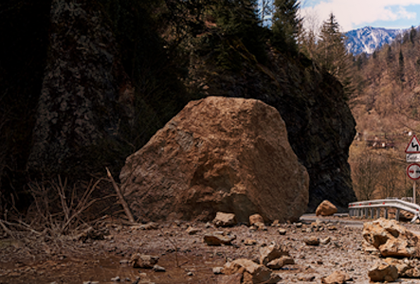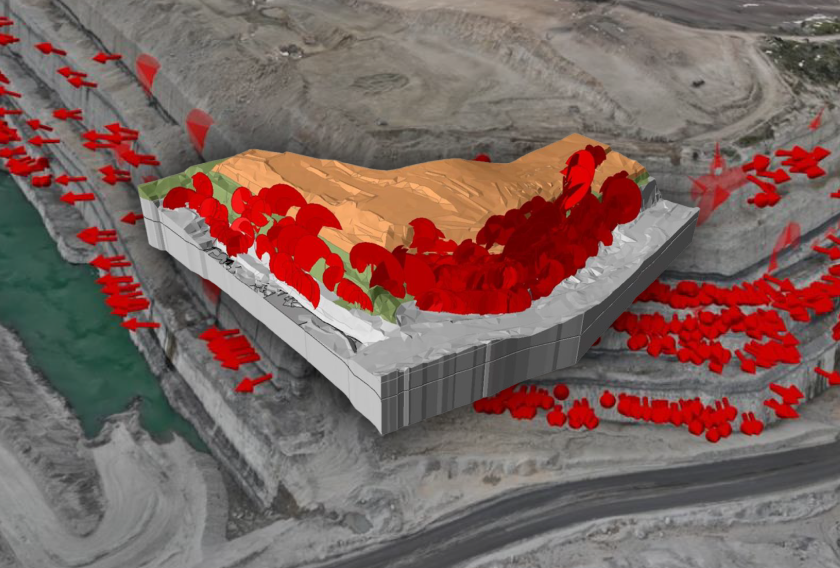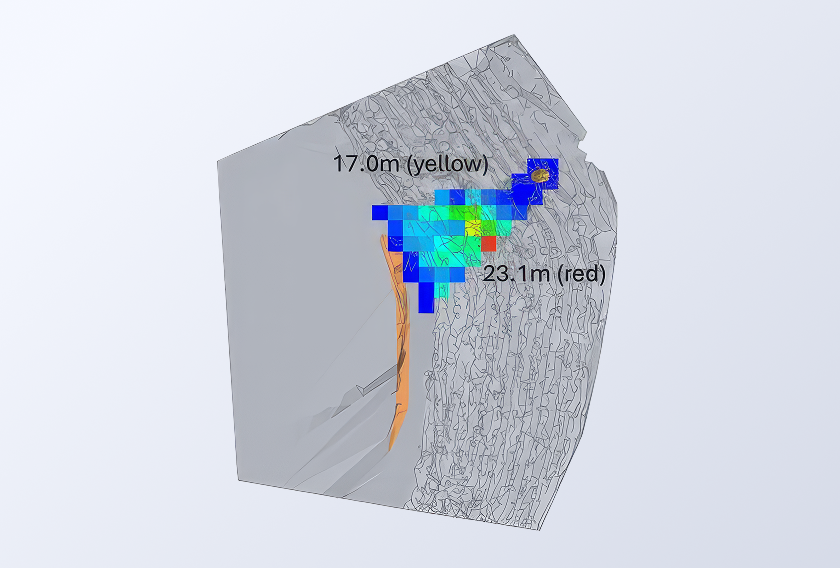RocFall2’s New Update Integrates Rock Fragmentation into Design Decisions
- Dr Grace Huang, Geotechnical Product Manager
How do you model something that refuses to follow a single path? When a rock strikes a slope, it can shatter into a cascade of fragments, each taking its own unpredictable course — carrying only a fraction of the original energy but multiplying the hazard. For decades, this chaotic process known as fragmentation has been recognized as one of the most defining aspects of rockfall behaviour, yet also one of the hardest to capture in simulation.
This uncertainty, for engineers, translates to difficult protection design and oversized safety margins. In response to this challenge and growing user demand, Rocscience has introduced a new fragmentation analysis in RocFall2 version 8.027. The new feature models how rocks split, lose energy, and scatter downslope; enabling engineers to simulate how breakage reshapes runout distance, dispersion, and impact energy with unprecedented realism.
This article explores the methodology behind RocFall2’s fragmentation analysis and demonstrates its real-world application through a validated case study.
This fragmentation module was developed in collaboration with Dr. Davide E. Guccione and The University of Newcastle team, as part of the Australian Research Council (ARC) Industry Fellowship (IE230100410).
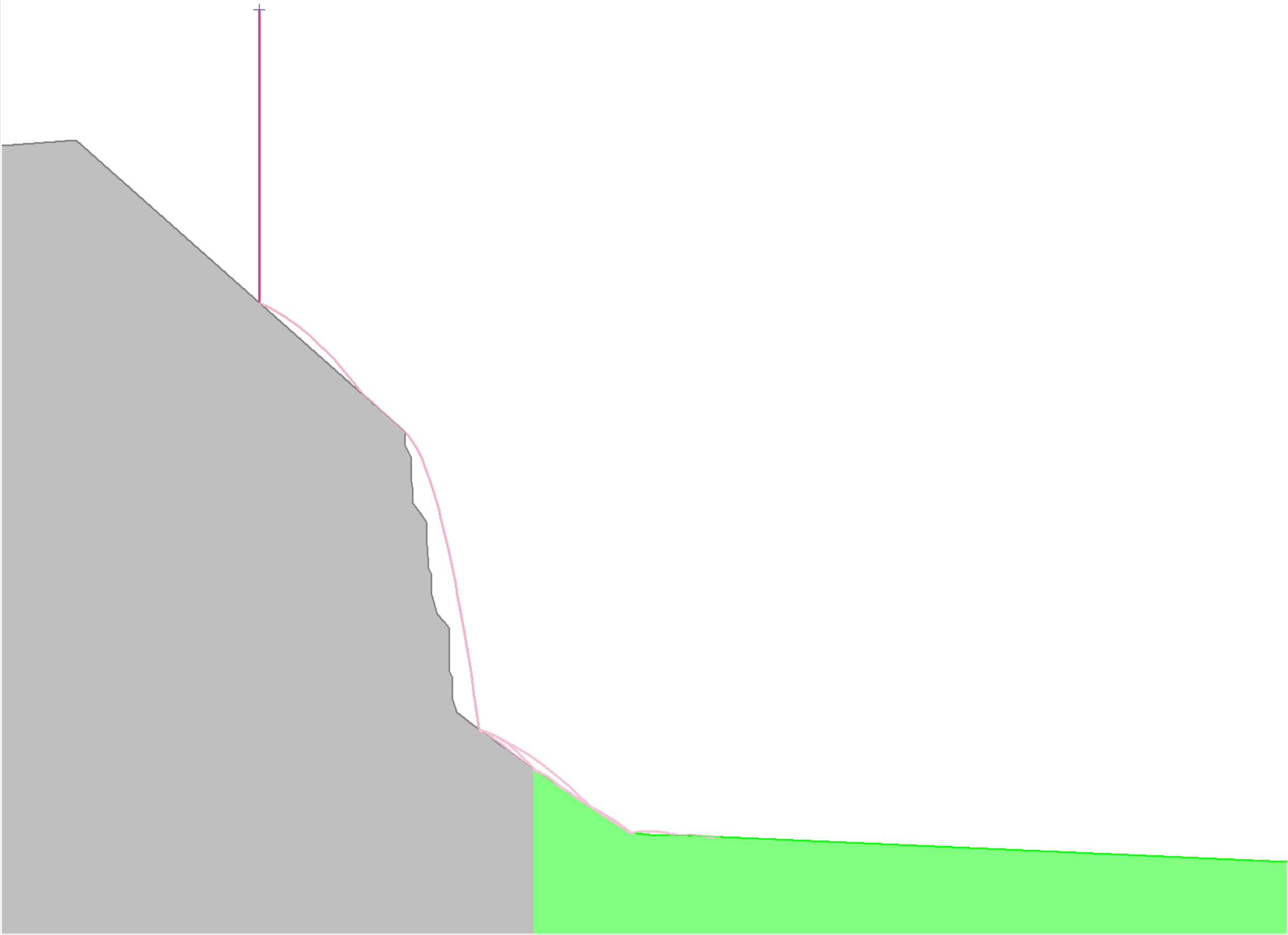
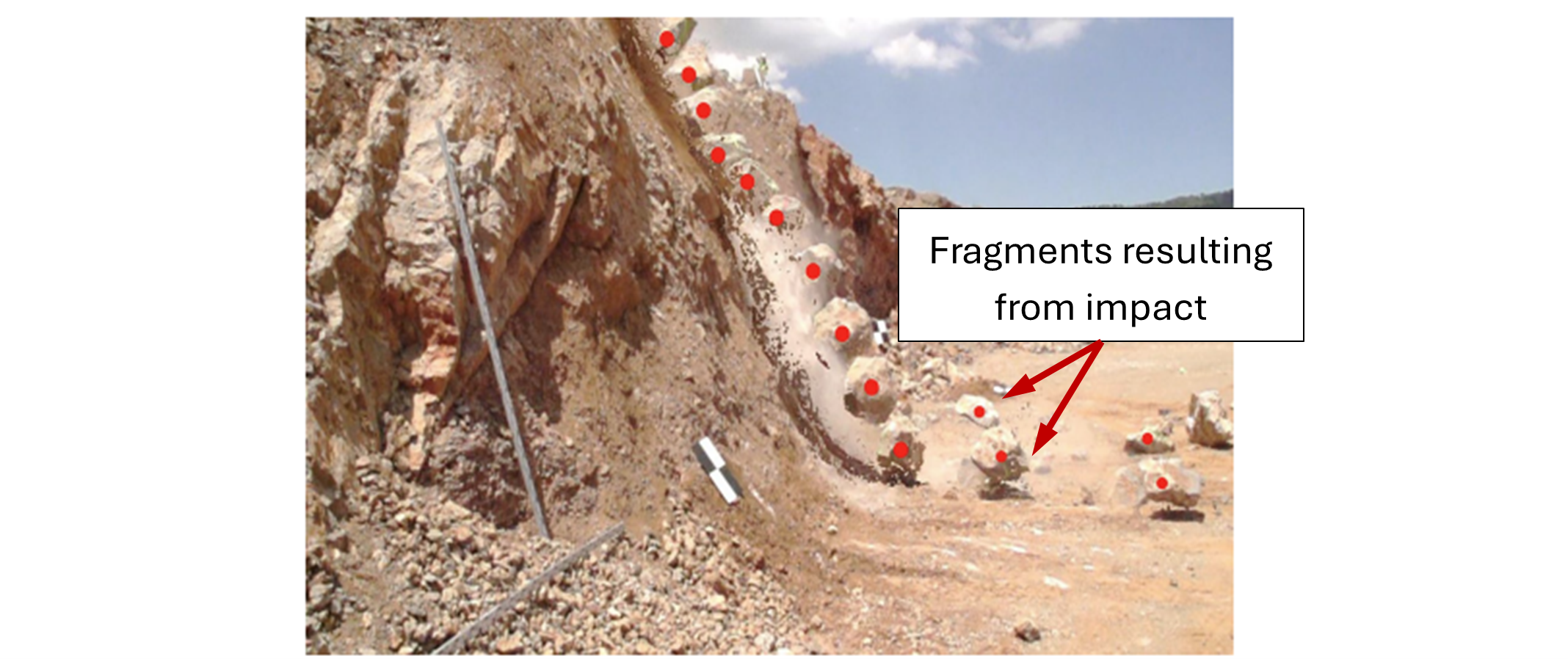
Fragmentation Analysis in RocFall2
The fragmentation analysis in RocFall2 is based on an empirical stochastic method (Guccione et al., 2025), developed through controlled impact tests of a series of artificial spherical rock-like specimens dropped and fractured onto concrete (Guccione et al. 2021a, 2021b, 2023). These experiments provided detailed observations on fragment count, size distribution, and velocity, forming the basis for RocFall2’s calibrated fragmentation behaviour.
Material characterization parameters are taken from standard laboratory tests and mapped to the model inputs they inform: indirect tensile strength (Brazilian test) for tensile behaviour and fragmentation propensity; intact secant Young’s modulus — derived from unconfined compressive strength (UCS) data — to estimate rebound velocity of blocks and slope compliance; and Mode I fracture toughness to quantify the energy required to create new fracture surface area and therefore estimate fragmentation energy loss.
Within RocFall2, this complex empirical foundation translates into a straightforward workflow. Under Project Settings, users can select the Lumped Mass method and enable Fragmentation Analysis. Material strength properties are then assigned via the Slope Material Library and Rock Type Library, defining parameters for both slope strata and falling blocks (seeders). For users without laboratory data, RocFall2 provides a reference parameter library containing representative values for common rock types, ensuring the analysis remains accessible yet technically robust.
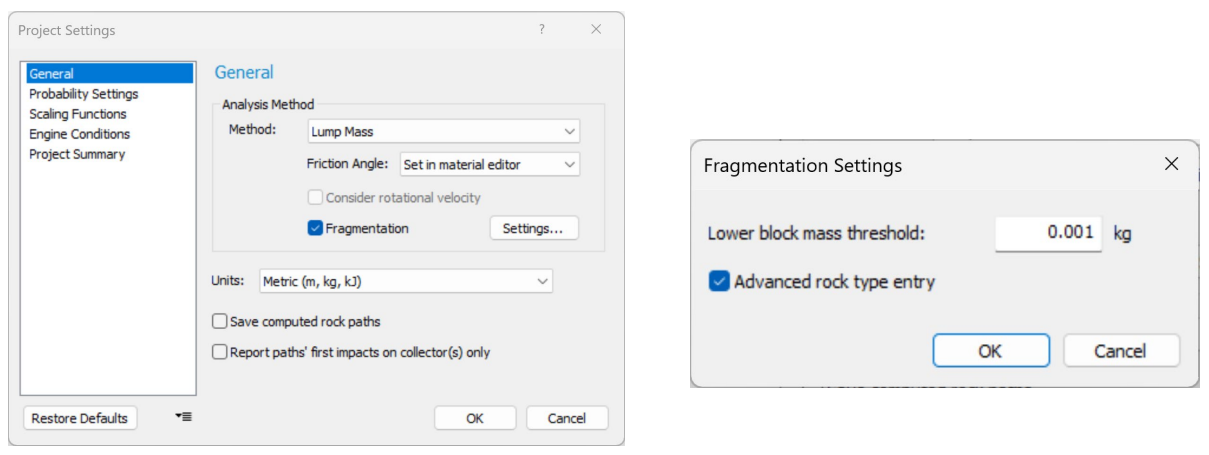
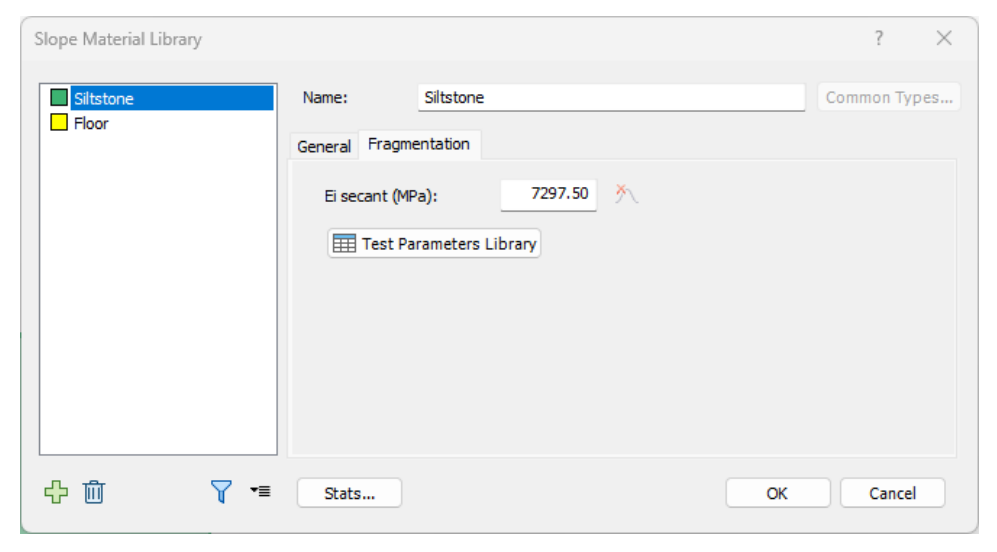
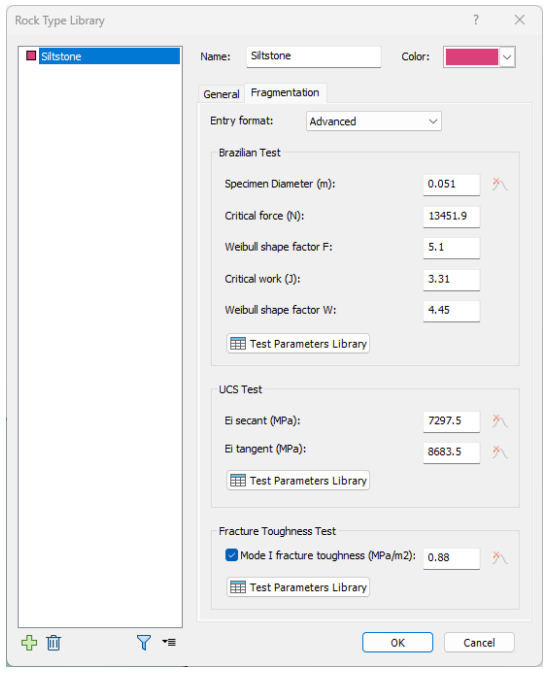
Rockfall analyses that include fragmentation in RocFall2 are interpreted stochastically, consistent with traditional non-fragmentation simulations. However, the inclusion of fragmentation introduces two additional data dimensions — block mass and block volume — providing deeper insight into slope behaviour.
With each fragmentation occurrence, the total number of blocks could increase while individual fragment size could decrease, altering both runout dynamics and energy distribution along the slope. By combining these new datasets with established outputs such as runout distance, kinetic energy, velocity, and bounce height, engineers can perform a more comprehensive assessment of slope protection needs and optimize barrier placement and capacity with greater confidence.
Validation Case Study: Vallirana Rockfall Tests
To validate the new fragmentation analysis, RocFall2 was benchmarked against full-scale in-situ rockfall experiments conducted in Vallirana, Spain (Gili et al., 2022; Matas et al., 2020; Prades-Valls et al., 2022).
Among the available datasets, Test 4 from Gili et al. (2022) was selected for its comprehensive documentation of fragment counts, runout distances, and block energies. In this experiment, 24 limestone blocks ranging from 0.5 m³ to 2.25 m³ were dropped from a height of 8.5 m along a defined slope profile (Figure 6).
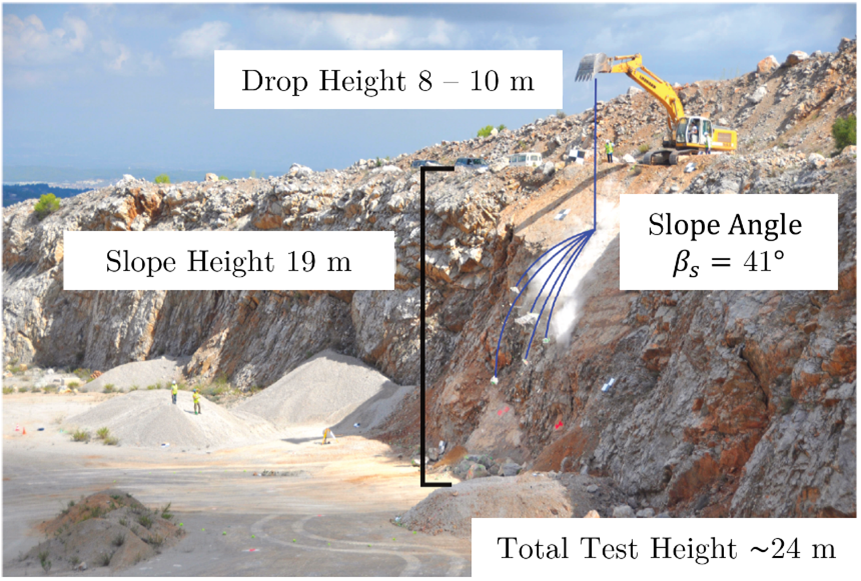
Model parameters in RocFall2 were derived directly from the published uniaxial compressive strength (UCS) and Brazilian tensile (BT) strength test data (Gili et al., 2022), with further calibration of the slope’s intact secant Young’s modulus to replicate the observed number of fragments.
Two stochastic analyses were conducted using 100 simulated blocks: one without fragmentation (to establish a baseline) and one with fragmentation enabled. The non-fragmentation case was first used to calibrate the coefficients of restitution, ensuring realistic runout distances before introducing fragmentation.
Fragmentation Behaviour and Model Response
When fragmentation was activated, the results mirrored the field observations with high fidelity. As blocks impacted the slope, individual fragments separated, reducing both mass and velocity while increasing dispersion downslope.
Figure 7 shows the simulated rock paths, where colour saturation represents the remaining mass relative to the original block. Reduced colour saturation indicates a reduction in the block mass due to fragmentation, compared to the original unfragmented seeder rock mass. The saturation percentage is calculated as the mass percentage of the original seeder, allowing users to easily visualize the change in rock size distribution along the slope.
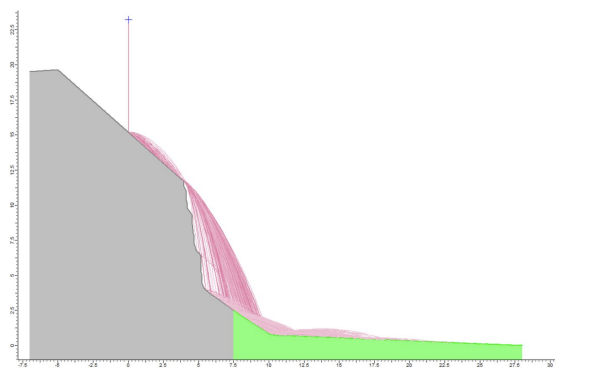
Across 100 stochastic realizations, the initial 100 blocks evolved into 1015 fragments, matching the fragmentation intensity documented in the Vallirana experiments. Figure 8 displays the number of fragments found at the end of the simulation (i.e., toe of slope), and the corresponding fragmentation zones (orange markers); providing a clear view of how and where fragmentation events concentrated along the slope.
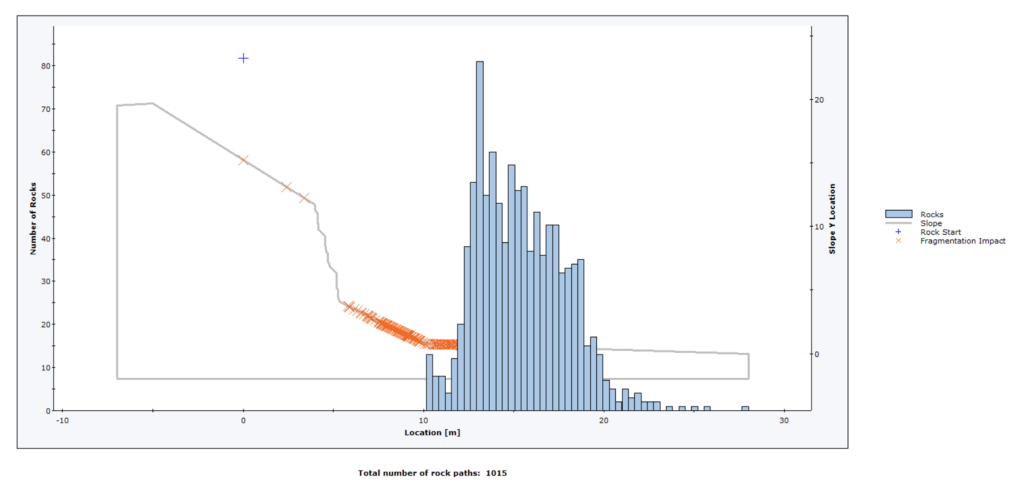
Comparative Analysis: With vs. Without Fragmentation
To evaluate the effect of fragmentation on protection design, the RocFall2 results were compared directly between the non-fragmented and fragmented simulations (Figure 9).

Key findings include:
- Runout Distance: Fragmentation produced a wider dispersion of runout distances, reflecting realistic energy loss and scattering behaviour.
- Kinetic Energy: The 90th percentile total kinetic energy decreased from > 450 kJ (without fragmentation) to < 150 kJ (with fragmentation), indicating a significant reduction in impact severity.
- Block Mass Distribution: Fragmentation yielded smaller final masses at the slope toe, emphasizing how breakage reduces individual block energy but increases the number of impacts.
Summary
Fragmentation analysis marks a major advancement in RocFall2’s ability to simulate real-world slope behaviour. By quantifying how rocks split, lose energy, and disperse downslope, the feature delivers a more complete picture of rockfall dynamics and their impact on protection system design. Integrating fragmentation into standard workflows allows engineers to design with greater precision — aligning model assumptions with field reality, minimizing overdesign, and elevating overall slope safety.
With RocFall2 v8.027, Rocscience continues to turn complex research into accessible tools that help engineers design with confidence. Engineers can now explore this feature directly in RocPortal to see how fragmentation analysis enhances their slope design workflow.
Experience Rock Fragmentation Analysis in RocFall2
We invite you to explore this new feature and share your experiences to support its continued refinement!
Start Your Free Trial